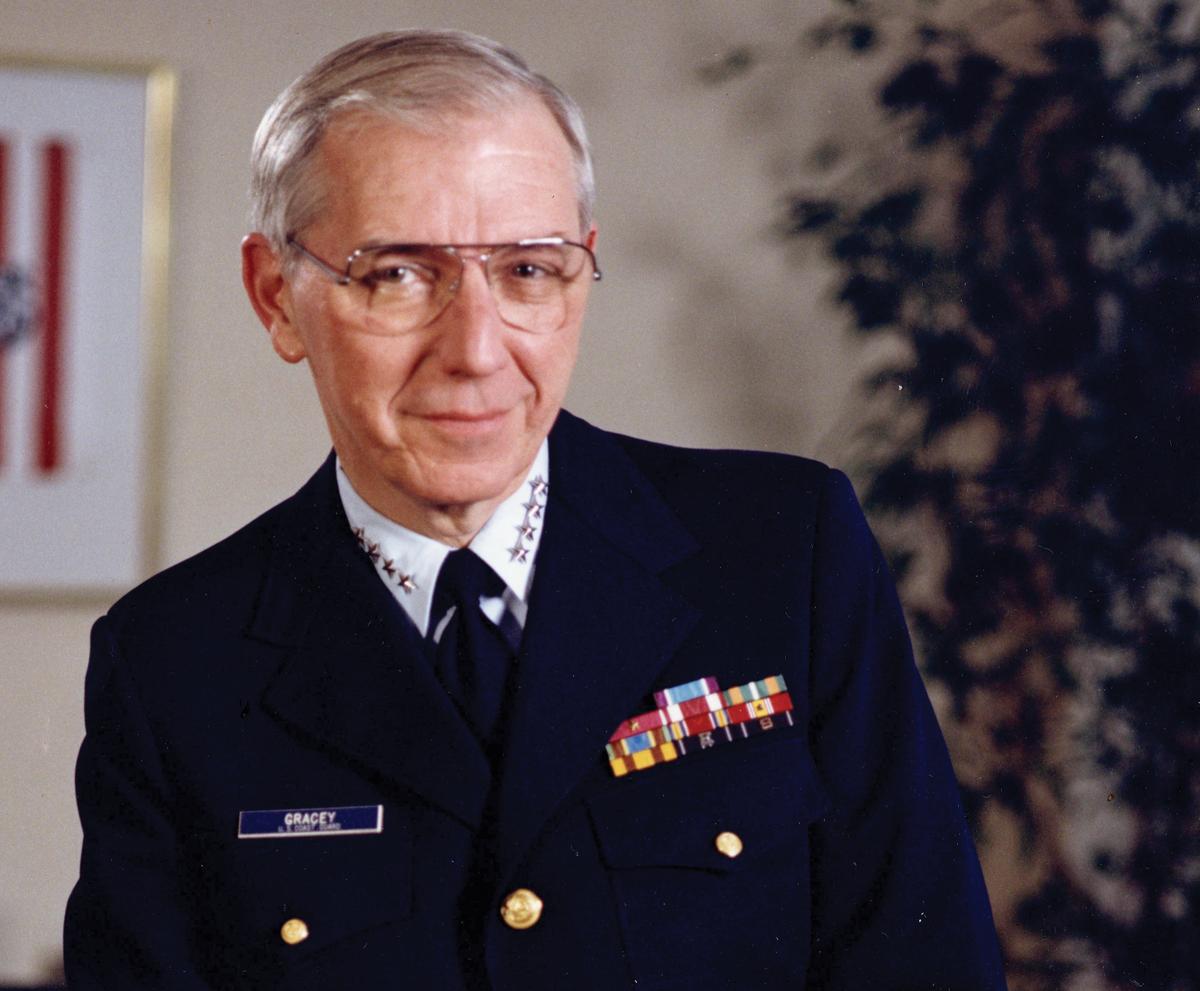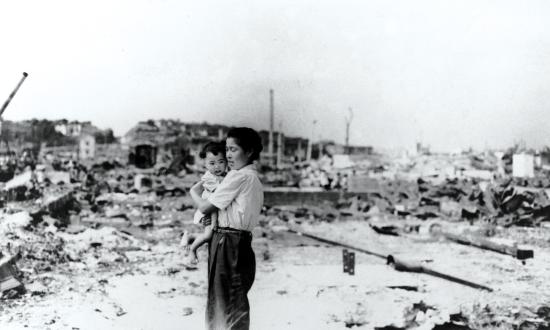Admiral James Gracey (1927–2020) served as Commandant of the Coast Guard from 1982 to 1986. In this narrative from his 2001 Naval Institute oral history conducted by Paul Stillwell, Admiral Gracey describes his experience in the 1940s as a cadet on board a sail training ship that Denmark had loaned to the U.S. Coast Guard Academy.
With sail training you learn to read the wind and the waves, and you pay close attention to the weather. A square-rigged ship is limited in how it can sail, how close to the wind and so forth. There was no roar of the engines, none of that—just sea and weather sounds and feel.
It gave you a great sense of the magnitude of what you were coping with when you were at sea. It’s mostly that business of learning how subject your ship is to the elements. If you’re in a search-and-rescue situation, you have some feel that the object of the search isn’t going to be where they said they were when they called you.
Sailing on the Danmark was a marvelous experience. The captain and the first officer and a couple of the junior officers were Danish, but all the rest of the people were Coast Guardsmen. The captain’s name was Knud Hansen. There was another officer named Rohmer. His assignment was the mizzen, the after mast. One of Mr. Rohmer’s jobs was to get cadets to climb the rigging. I can hear him now, yelling, “Mizzen men, mizzen men.”
When you first went aboard the Danmark, you had to climb up to the top of the mast and down the other side. The ship had nice solid cable stays. Stretched between were really flimsy-looking pieces of rope called ratlines. They were where your weight was when you went aloft. The warning was, “Don’t hang on to the ratlines. Hang on to the stays because those ratlines break.” And we were going up in the air 150 feet. Later we would scramble around at various points up there. But that first day we just went up and over.
On the way up, at platforms, we had to hang with our backs to the deck, climbing backwards up and over onto the platforms. Then we had to go up to the next one. It was scary but exciting. Some of the people didn’t want to do it. Some were terrified. Mr. Rohmer would take a belaying pin out of the fife rail, and he would go over and hit a stay just below a guy’s feet and say, very firmly, “You vill go up.” And he’d go right up behind the cadet, hitting the stay to keep him moving. Then he would find another reluctant or terrified soul and do it again.
It’s a gutsy thing to go aloft and work up there. In those days we didn’t have safety belts or anything. You went out on the yardarm. You got faith in yourself, but it also taught you that what you did you couldn’t do alone. We were using heavy canvas sails. The only way to get them up was to lean over the yardarm and then, in synch with the others out there with you, put it under your belly. Then, all together, you would do it again and again and again. When you leaned over, your feet were on what was called a footrope. It would go right out straight behind you. So you were hanging there on your heels, really, and your belly. When you pulled the sail up, the footrope would swing back under the yardarm. You learned that you could do things you never dreamed of, and you learned the importance of teamwork.
During part of my time on board, my sail station was on the foremast. That was the domain of Mr. Langevad, who was a first-class gentleman. We all loved him. Many years later, when I was Commandant of the Coast Guard, the Danmark was coming to Washington. I wanted to have a special affair for them out at the Commandant’s quarters. We hosted the Danish ambassador and all the officers from the ship. I was able to get in touch with Mr. Langevad through his daughter in New York. I told him that we were going to do this and asked if there was any possible way he could come and join us.
Well, it turned out that he had been trying to join the ship somewhere anyway, so he came over. He spent an evening with us at our quarters. In the back we had a shaded patio and broad set of stairs into the house. The two of us stood out on the steps—like a stage—and told Danmark and cadet stories for a long time, but everybody was just eating it up. I had a lot of enjoyable days as Commandant, but I’ve got to tell you, that one was very special.




